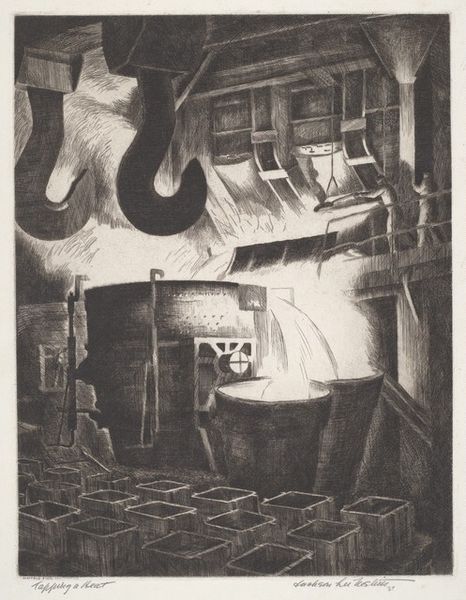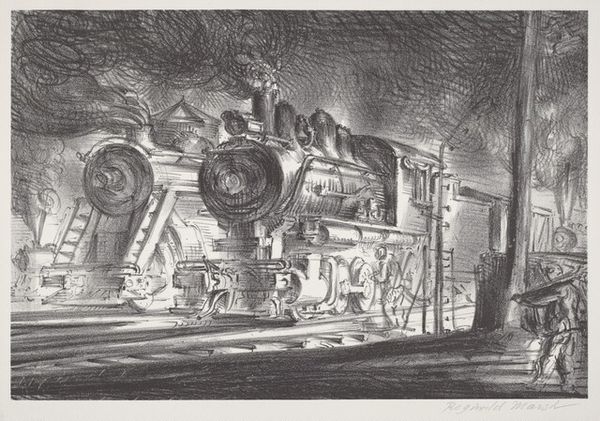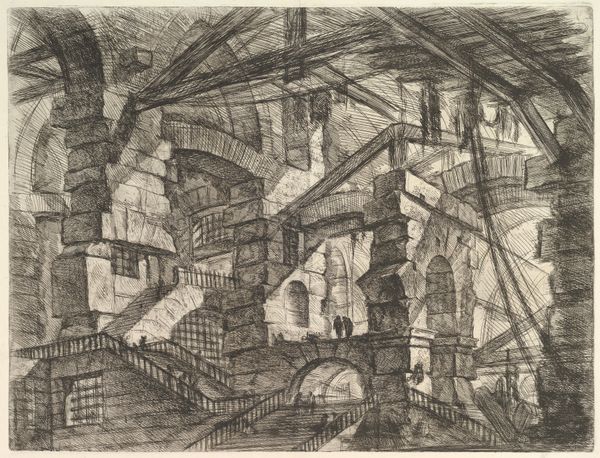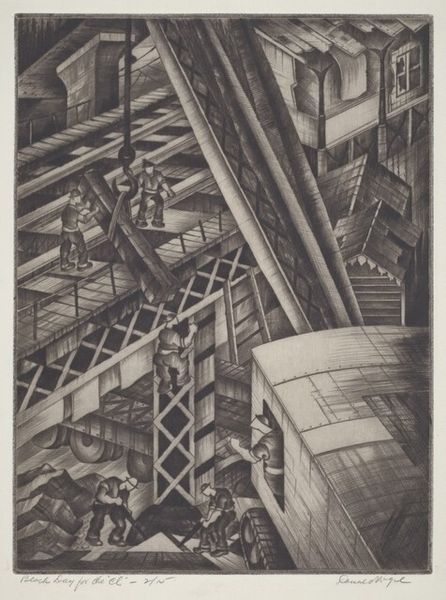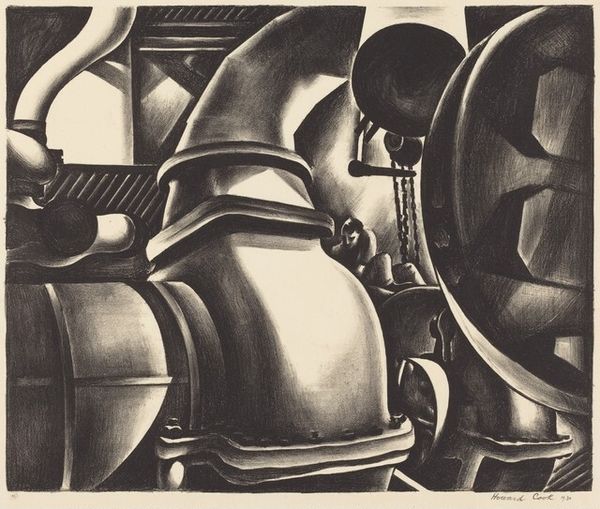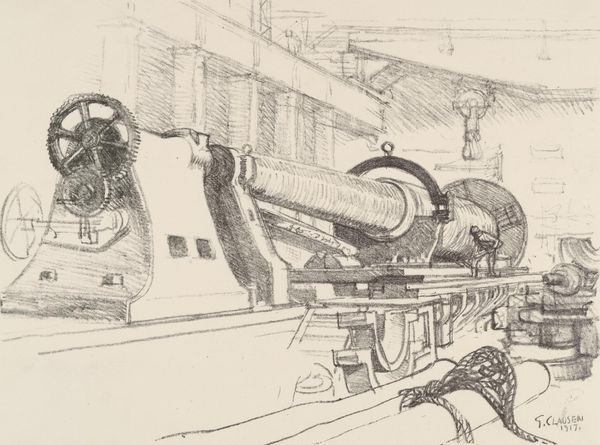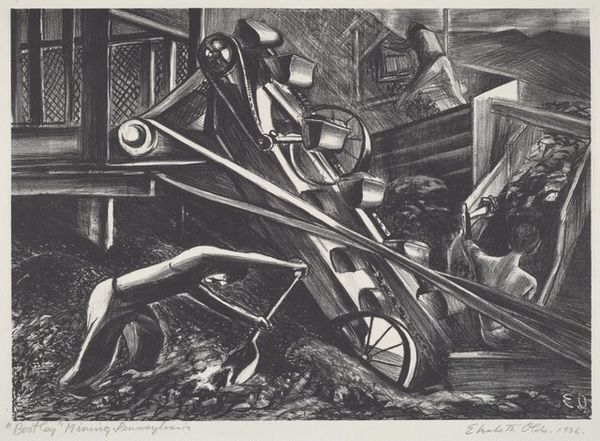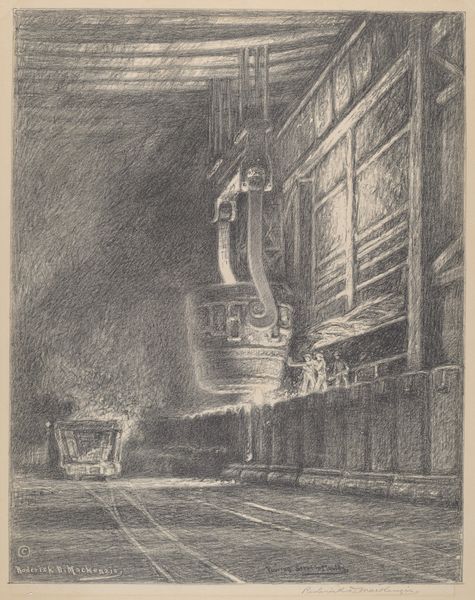
drawing, print, graphite
#
drawing
# print
#
graphite
#
genre-painting
#
modernism
#
realism
Dimensions: Image: 337 x 438 mm Sheet: 401 x 580 mm
Copyright: National Gallery of Art: CC0 1.0
Editor: So, here we have David Burke’s "Copper Smelters," a graphite print from around 1939. I'm immediately struck by the contrast – the sharp, angular metal forms against the implied heat and energy of the smelting process. It feels very imposing and gritty. How do you interpret the composition in this work? Curator: The composition operates on several levels. Notice the dynamic interplay between light and shadow. Burke uses a high contrast to define forms, essentially abstracting industrial forms to reveal underlying structure, juxtaposing organic with geometric. Consider the placement of the worker figure. Is he dwarfed by the machinery, or is he integrated as part of the factory's mechanical flow? Editor: That’s interesting. He seems both vulnerable and in control at the same time. And it's interesting that you focus on the structural contrast between light and shadow as defining forms. Curator: Precisely. The work is less about social realism than about investigating inherent forms within industrial subjects. It highlights basic abstract forms of the structural composition itself rather than a detailed representation of any worker's condition or struggle. Think of the printmaking process itself – the bold outlines that emerge through careful scraping. Editor: I see what you mean. By focusing on the forms and lines, you strip away any overt narrative and focus on the aesthetic impact of the image itself. What do you make of Burke's choices with texture? Curator: Texture, in the form of light and shadow, is Burke's principal vehicle here, using the medium as method. Rough strokes are strategically distributed that convey the grit, soot and harsh atmosphere of a factory without the addition of color or detail. Instead of imitating an environment or feeling through photorealistic strokes, it’s built up, mark by mark. What do you observe? Editor: That Burke has transformed an industrial scene into a complex arrangement of visual components; one of semiotic intensity and structural interplay. Thanks for clarifying. Curator: And thank you for articulating the essence of semiotic investigation into structural principles. It is precisely this sort of attentive engagement to both surface and the fundamental form that rewards continued study.
Comments
No comments
Be the first to comment and join the conversation on the ultimate creative platform.
